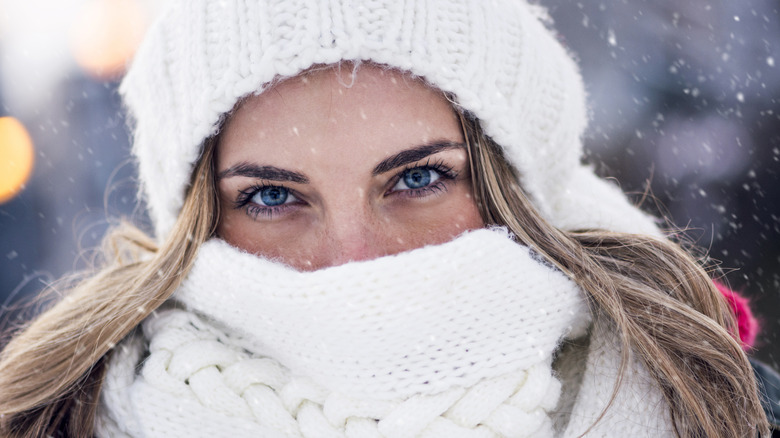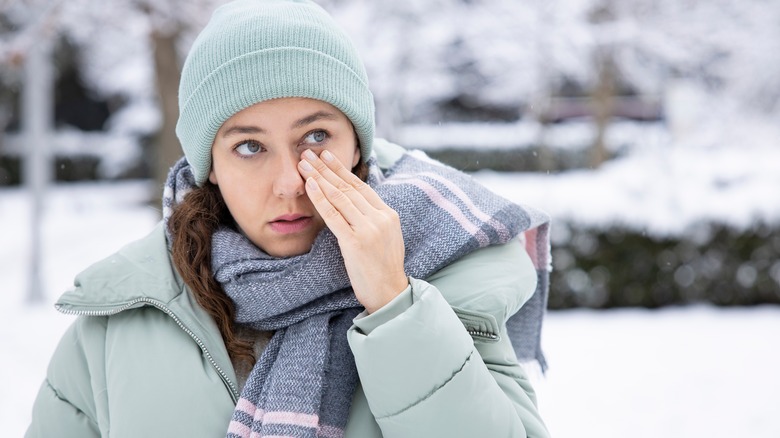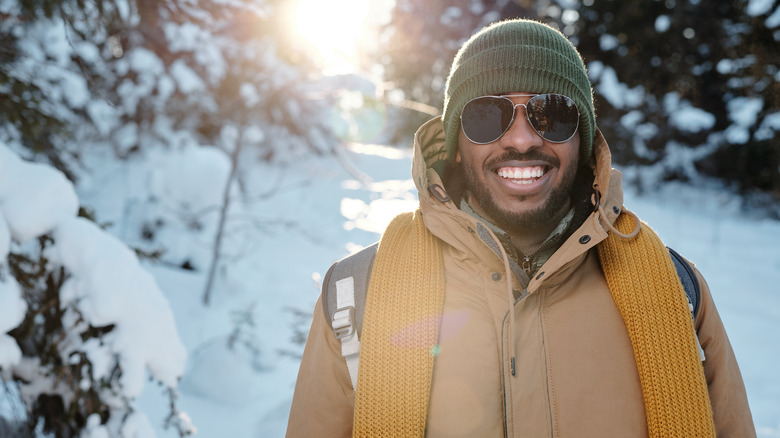Turns Out Winter Snow Can Actually Damage Your Eyes. What We Know
When the winter months roll in, your skin might become dry and you may require a more heavy-duty moisturizer, but other strange things can happen to your body in the winter.
Take your eyes for instance. If you have dry eyes, the colder months and resulting heating appliances indoors might make matters worse, for starters. It is also not uncommon for your eyes to tear up a lot more when the weather is colder. Blame the cold wind and temperature for that particular delight. Pencil in an increase in screen time (because you don't like layering up and heading outdoors only to realize you're wearing too few layers to combat the cold, the snow, and the wind), and you've got yourself a complex mix of weather-related conditions that can put stress on your peepers.
But it's not just the cold weather that can pose a threat to your eyes. The winter snow can too, thanks to a condition called snow blindness. Snow blindness refers to a type of photokeratitis that is particular to the cold months of the year (via American Academy of Ophthalmology), and it has to do with how the sun's UV rays reflect off ice and snow.
How does snow blindness affect your eyes?
Have you noticed how when you walk out of your home on a cold winter day with snow all around you, the entire atmosphere around you just seems all that brighter? One reason for this is that the snow and ice around you are reflecting the sun's rays. So UV rays are coming from above and below you, so to speak. And while this might seem interesting in theory and even welcome on days when the days are a lot shorter, your peepers may not always think so.
Overexposure to UV rays from the sun can result in painful snow blindness. Your cornea can become irritated, you might experience light sensitivity, and even a burning sensation in your eyes — it's kind of like sunburn but in your eyes. It is also possible that the snowy weather can cause your cornea's surface to become frozen and dry, per the American Academy of Ophthalmology.
Other symptoms of snow blindness include redness, pain, blurred vision, watery eyes, headache, twitching eyelids, and sometimes temporary vision loss and changes in the colors you see. If you're seeing halos around bright lights and pain is accompanied by it, this could be a sign of photokeratitis too, according to WebMD. Also, ever notice how you don't see your sunburn until you come back home and strip off your clothes after a day at the beach in the summer? Photokeratitis in the winter is the same. You may not notice anything until the damage is done, but it doesn't last forever, as CNN reported.
How to prevent and treat snow blindness
Similar to sunburn, prevention is your first line of defense. For example, if you're outside exercising, learning to run safely during the cold winter months might save you some unnecessary pain and discomfort.
Make sure your peepers are protected from the double-whammy of UV ray exposure. Sunglasses are not just a necessity during the hot summer months. They can do wonders when it comes to keeping your eyes from damage in the colder months too, according to ophthalmologist, Dr. Jean Tabin (via University of Utah Health). "Bigger ones are better in the winter. Wearing goggles or sunglasses that wrap around will give you the most protection," added the expert. Be especially prepared when you're outdoors doing activities like hiking, etc. Wear a hat when you can.
Treating winter snow-induced photokeratitis could be as simple as waiting it out with the proper precautions if you were to go out in the snow again or visiting your ophthalmologist who might prescribe painkillers and antibiotics. As for what you can do for relief at home, take out your contact lenses (if you wear any) immediately and place a cool cloth on your eyes. Avoid driving or doing anything that might be a safety concern if you're experiencing symptoms (via WebMD). Snow blindness will resolve in a few days but continued unprotected exposure to the sun's harmful rays can lead to eye diseases and even cancer.



